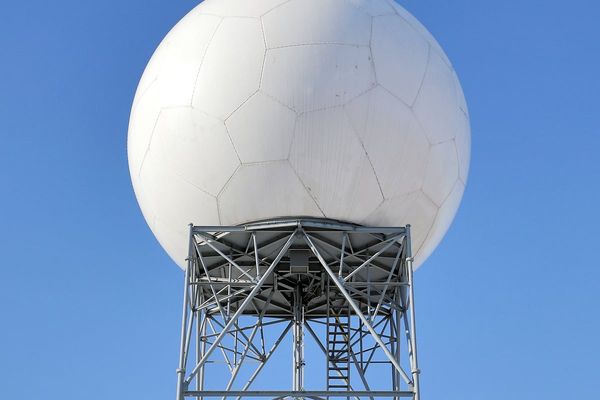
- Nvidia CEO Jensen Huang unveiled the next generation of RTX Blackwell GPUs at CES 2025, alongside "Cosmos," a foundation model aimed at accelerating autonomous vehicle and robotics development. He also declared the rise of "Agentic AI" as the next major technological shift, predicting AI agents will drive a multi-trillion-dollar industry and transform how people work.
Nvidia CEO Jensen Huang used his CES 2025 keynote to unveil the company’s next generation of GPUs and declare the rise of "Agentic AI"—a shift he says will create a multi-trillion-dollar industry and redefine how people work.
“The age of AI Agentics is here,” Huang told the crowd, describing a shift from generative AI to agentic AI—a future driven by intelligent AI agents capable of assisting with tasks across industries. Huang called this emerging sector "a multi-trillion-dollar opportunity," positioning Nvidia at the forefront of the movement.
Huang’s keynote came with significant hardware announcements as well. Nvidia introduced the RTX Blackwell family of GPUs, delivering what Huang described as groundbreaking performance improvements at lower prices. The highlight was the GeForce RTX 5070, which Huang said matches the performance of the previous generation’s RTX 4090 but costs just $549—far less than the 4090’s $1,599 launch price.
“This is impossible without artificial intelligence,” Huang said, attributing the price-performance breakthrough to AI-driven efficiencies.
The keynote opened with a video demonstrating AI’s growing role in everyday life. From AI-powered safety features in cars to cartoon-style robots comforting children at doctor visits, the video painted a picture of AI agents becoming integrated into health care, mobility, and personal well-being. It also highlighted AI’s potential to “restore what we’ve lost,” featuring people regaining speech and mobility through AI-driven technologies.
Stepping onto the stage in a flashy jacket, Huang greeted the audience by joking about his style saying, “I’m in Las Vegas after all,” before revisiting Nvidia’s journey from its founding in 1993 to the creation of the world’s first programmable GPU. Huang recalled the company’s early work with Sega’s Virtua Fighter, using side-by-side images and a demo video to show how Nvidia’s graphics technology has evolved—from blocky fighters to hyper-realistic digital characters.
“We invented the programmable GPU and it started 20-plus years of incredible advancements,” Huang said as he walked through Nvidia’s most pivotal milestones.
But the focus quickly shifted to Nvidia’s future. The RTX Blackwell series, Huang announced, features 92 billion transistors and G7 memory from Micron, capable of 1.8 terabytes per second of bandwidth—doubling the previous generation’s performance. Huang described the engineering as “a miracle,” underscoring how the GPUs are designed to handle both graphics and AI workloads simultaneously.
Key product announcements from the keynote:
- RTX 5070 — Offers the performance of the RTX 4090 at $549, dramatically undercutting the previous generation’s high-end price.
- RTX 5070 Ti — Delivers 4090-like performance at $749, featuring 1,406 AI TOPS and 16GB of G7 memory.
- RTX 5090 — The top-tier model with 3,404 AI TOPS and 32GB of G7 memory, retailing for $1,999.
- RTX 5080 — Mid-range option with 1,800 AI TOPS and 16GB of G7 memory, priced at $999.
- RTX Blackwell laptops — Laptops powered by RTX Blackwell GPUs, offering 40% longer battery life and twice the performance at half the power, these range from $1,299 - $2,899.
Nvidia’s new RTX GPUs introduce technologies like RTX Neural Shaders and RTX Neural Face, which use AI to enhance rendering and create more lifelike human faces, while RTX Mega Geometry boosts environmental detail and Reflex 2 cuts latency.
Another major leap demonstrated at CES was DLSS 4, Nvidia’s latest AI-powered upscaling, capable of generating multiple frames at once. In a demonstration, DLSS 4 rendered a scene at 247 frames per second (FPS)—over eight times faster than without AI—while keeping latency at just 34 milliseconds.
Project Digits will bring AI supercomputing to every desk
Huang also introduced Project Digits, a personal AI supercomputer that will allow AI researchers, data scientists, and students to access the power of Nvidia’s Grace Blackwell platform directly from their desktops (and he's soliciting official names for the device if you have an idea).
Project Digits is powered by the GB10 Grace Blackwell Superchip, which offers a petaflop of AI computing performance for prototyping, fine-tuning, and running large AI models, Huang said.
"AI will be mainstream in every application for every industry. With Project Digits, the Grace Blackwell Superchip comes to millions of developers,” Huang told the crowd. “Placing an AI supercomputer on the desks of every data scientist, AI researcher and student empowers them to engage and shape the
age of AI.”
Nvidia unveils Toyota autonomous vehicles partnership
Nvidia’s push into autonomous machines also took center stage as Huang unveiled "Cosmos", a new foundation model designed to advance physical AI, or AI that operates in the real world, such as autonomous vehicles or robotics. Cosmos generates synthetic data to train AI systems, accelerating their ability to navigate and adapt to real-world environments.
Huang announced a partnership with Toyota to integrate Nvidia’s AI systems into the automaker’s autonomous vehicle development.
“A trillion miles that are driven around the world each year, that's all going to be either highly or fully autonomous,” Huang said. "I predict that this will likely be the first multi-trillion-dollar robotics industry."
Jensen Huang's Iron Man moment on stage
Cosmos is part of Nvidia’s Omniverse expansion, supporting industrial applications in simulation, robotics, and autonomous systems. In one of the most memorable moments of the keynote, Huang stood on stage surrounded by autonomous robots, a scene that echoed the futuristic tech of Iron Man.
Jensen Huang at the CES talking about robots, like a scene from Iron Man 2 pic.twitter.com/AZbajRZSYZ
— My Meme Trades (@mymemetrades) January 7, 2025
The robots flanked Huang as he described Nvidia’s advances in AI-powered automation, reinforcing the company’s leadership in developing AI that interacts with the physical world.
What comes after generative AI? Agentive AI
While generative AI excels at creativity and automation, Agentic AI functions more like a digital assistant, capable of handling workflows, problem-solving, and providing real-time support across industries, such as human resources, software engineering, and medicine.
On Monday, Huang said we were officially entering the age of Agentive AI.
“AI agents are the new digital workforce,” he said, predicting that the different agents will change the way we work.
"The IT department of every company is going to be the HR department of AI agents in the future."
More reading on Jensen Huang and Nvidia:
- Nvidia CEO Jensen Huang debuts new AI platform to dominate the ‘ChatGPT moment’ in robotics
- In the age of Slack and Zoom, Jensen Huang still swears by email to keep tabs on every corner of Nvidia
- 60 direct reports, but no 1-on-1 meetings: How an unconventional leadership style helped Jensen Huang of Nvidia become one of the most powerful people in business







